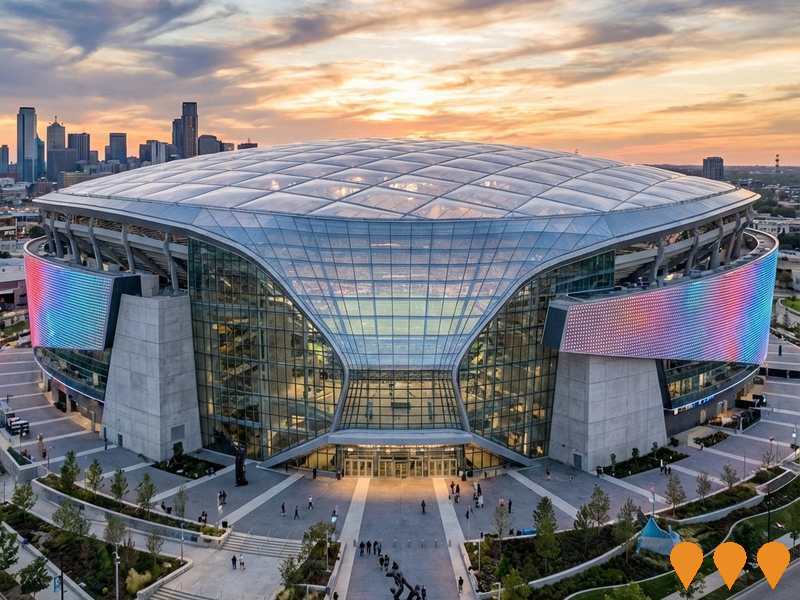Chart Color Schemes
est. as @ -- *
ABS ERP | -- people | --
2021 Census | -- people
Sales Activity
Curious about local property values? Filter the chart to assess the volume and appreciation (including resales) trends and regional comparisons, or scroll to the map below view this information at an individual property level.
Find a Recent Sale
Sales Detail
Population
Umina - Booker Bay - Patonga has seen population growth performance typically on par with national averages when looking at short and medium term trends
Umina - Booker Bay - Patonga's population is around 25,017 as of Aug 2025. This reflects an increase of 320 people since the 2021 Census, which reported a population of 24,697 people. The change is inferred from the estimated resident population of 25,009 from the ABS as of June 2024 and an additional 176 validated new addresses since the Census date. This level of population equates to a density ratio of 991 persons per square kilometer. Umina - Booker Bay - Patonga's growth rate of 1.3% since census positions it within 1.0 percentage points of the SA3 area (2.3%). Population growth for the area was primarily driven by overseas migration.
AreaSearch is adopting ABS/Geoscience Australia projections for each SA2 area, as released in 2024 with 2022 as the base year. For areas not covered, AreaSearch utilises NSW State Government's SA2 level projections released in 2022 with 2021 as the base year. Growth rates by age group from these aggregations are applied to all areas for years 2032 to 2041. Based on latest population numbers, the area is projected to grow by 3,263 persons to 2041, with an increase of 13.0% in total over the 17 years.
Frequently Asked Questions - Population
Development
Recent residential development output has been above average within Umina - Booker Bay - Patonga when compared nationally
Umina - Booker Bay - Patonga has granted around 133 residential property approvals per year. Between FY21 and FY25667 homes were approved, with an additional 33 approved in FY26 so far. Over the past five financial years, an average of 0.5 new residents per dwelling constructed was recorded.
New supply has kept pace with or exceeded demand, providing ample buyer choice and capacity for population growth beyond current forecasts. The average construction value of new properties is $467,000, consistent with regional patterns. This year, $4.9 million in commercial approvals have been registered, indicating limited commercial development focus compared to residential. Compared to Greater Sydney, Umina - Booker Bay - Patonga has slightly more development, at 42.0% above the regional average per person over the five-year period, maintaining good buyer choice while supporting existing property values. Recent construction comprises 49.0% detached dwellings and 51.0% medium and high-density housing, marking a significant departure from the current 70.0% houses pattern.
This focus on higher-density living creates more affordable entry points for downsizers, investors, and first-home buyers. The location has approximately 199 people per dwelling approval, indicating a low density market. Population forecasts indicate Umina - Booker Bay - Patonga will gain 3,253 residents by 2041. With current construction levels, housing supply should adequately meet demand, creating favourable conditions for buyers while potentially enabling growth that exceeds current forecasts.
Frequently Asked Questions - Development
Infrastructure
Umina - Booker Bay - Patonga has strong levels of nearby infrastructure activity, ranking in the top 40% nationally
AreaSearch has identified 16 projects that could impact the area, with key ones being Umina Beach Public Preschool, Umina Beach Multi-Dwelling Housing Projects, 100-101 The Esplanade Development Site - Ettalong Beach, and Ettalong Beach Hotel Development - 216-220 Memorial Avenue. A detailed list of these projects is provided below.
Professional plan users can use the search below to filter and access additional projects.
INFRASTRUCTURE SEARCH
 Denotes AI-based impression for illustrative purposes only, not to be taken as definitive under any circumstances. Please follow links and conduct other investigations from the project's source for actual imagery. Developers and project owners wishing us to use original imagery please Contact Us and we will do so.
Denotes AI-based impression for illustrative purposes only, not to be taken as definitive under any circumstances. Please follow links and conduct other investigations from the project's source for actual imagery. Developers and project owners wishing us to use original imagery please Contact Us and we will do so.
Frequently Asked Questions - Infrastructure
Umina-Ocean Beach Erosion Management Strategy
Coastal management project including beach nourishment utilizing sand from Ettalong Shoal, terminal protection of The Esplanade, and coastal monitoring program to address severe storm erosion. $1M investment.
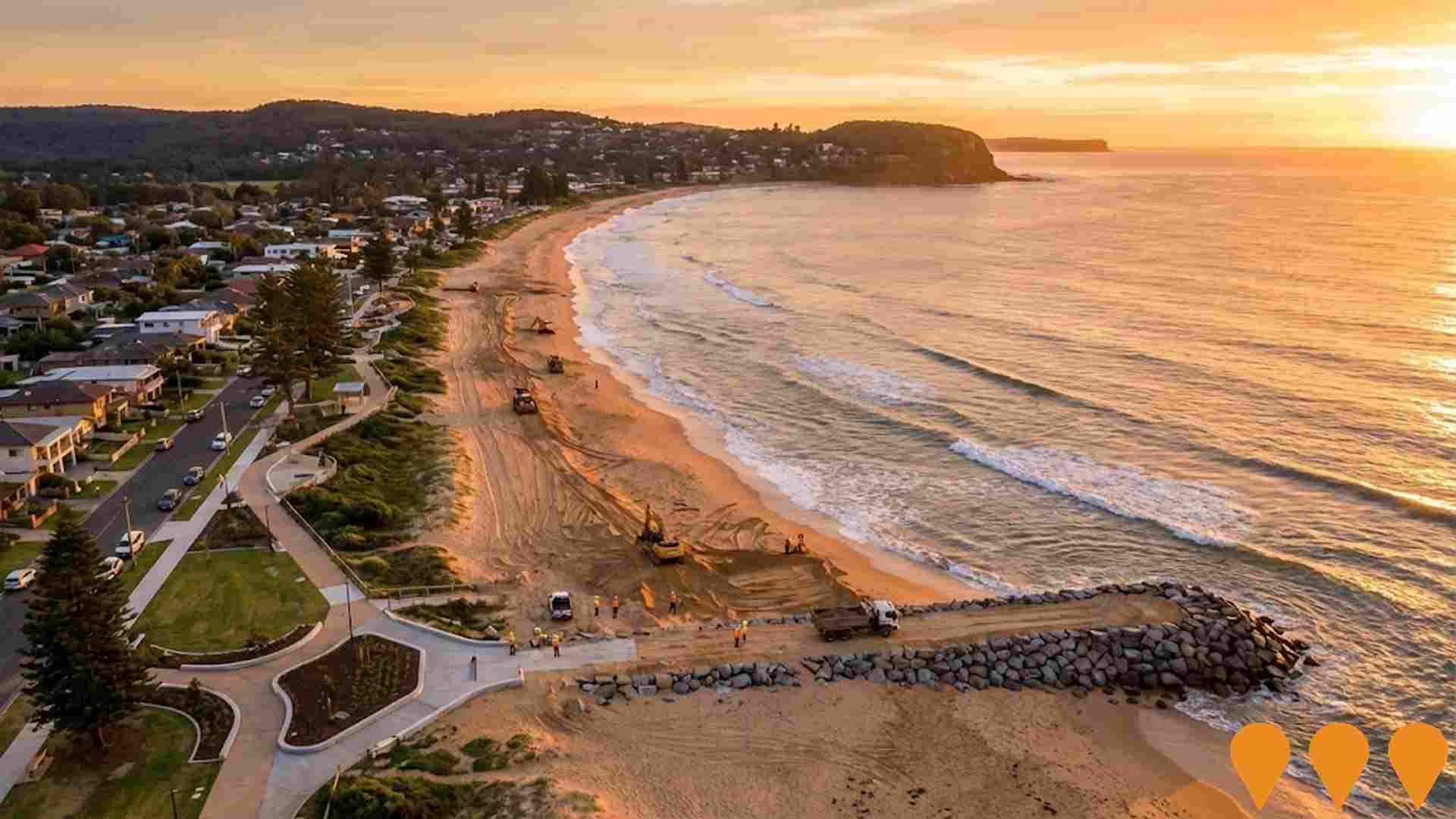
Mantra Ettalong Beach Resort
Major beachfront resort development comprising 236 strata apartments and 6,000 sqm licensed club facility. Joint venture between Ettalong Beach War Memorial Club and Multiplex Development. Premium beachfront location with views to Lion Island. Designed by PTI Architecture. Currently operating with ongoing lift upgrade works.
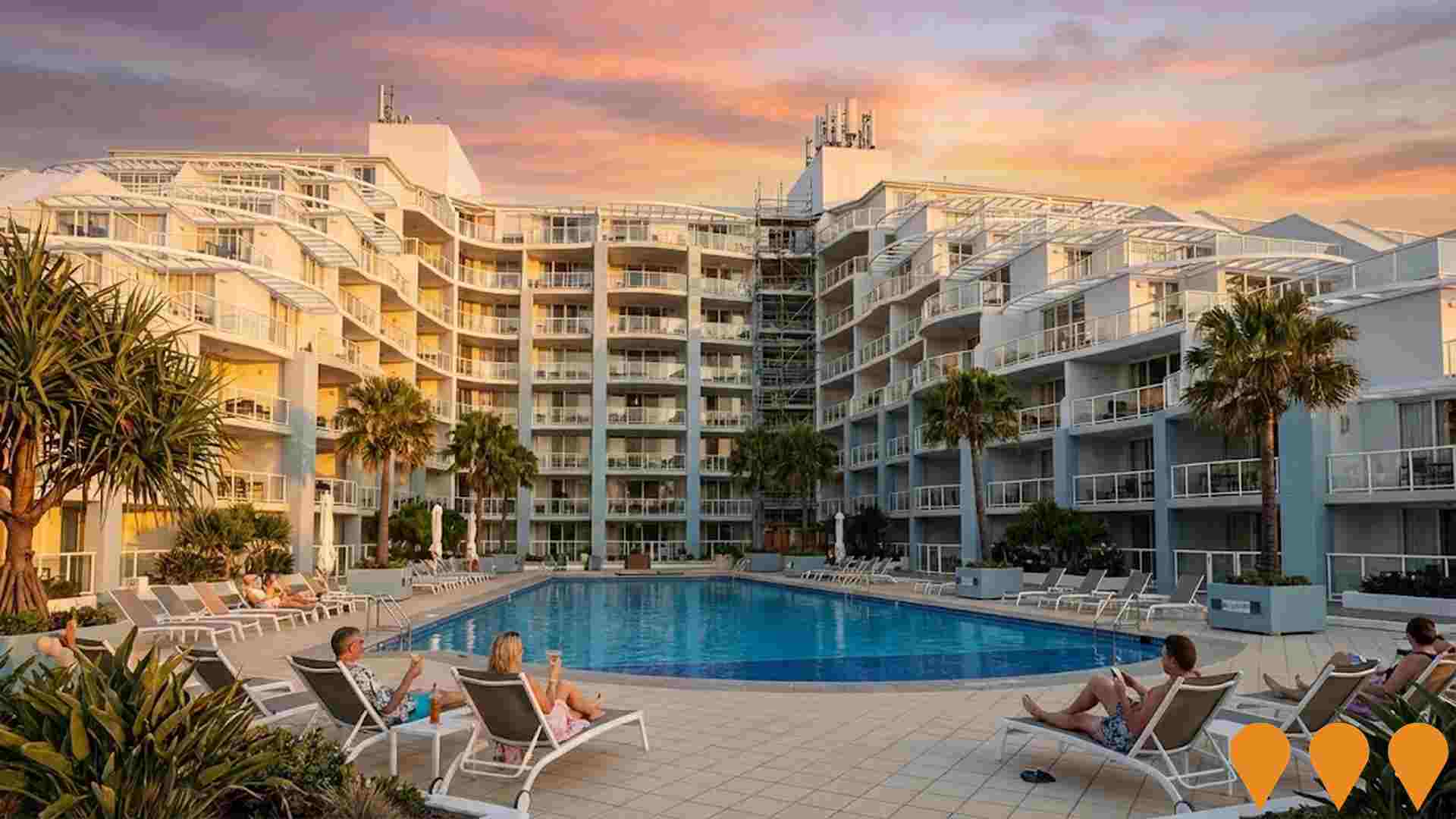
Ettalong Beach Hotel Development - 216-220 Memorial Avenue
Five-storey 83-room hotel development by Mars Property Group on 1,467 sqm site. Features ground floor restaurant, conference facilities, two levels of basement parking for 77 vehicles, and roof terrace with bar, pool and lounge. Behind the Atlantis residential complex. Development approval granted in 2020, but the project is listed as lapsed in a 2025 Central Coast Council report, indicating no construction has commenced and the approval has expired.

Umina Beach Public Preschool
Delivery of a new public preschool co-located at Umina Beach Public School. The facility is planned to include 3 preschool rooms, admin and staff areas, amenities and a quality outdoor play area, accommodating up to 60 children per day (around 120 places per week). Early works and site investigations commenced in 2025, with completion targeted for Day 1, Term 1 2027. HPAC Pty Ltd is listed as the appointed builder.
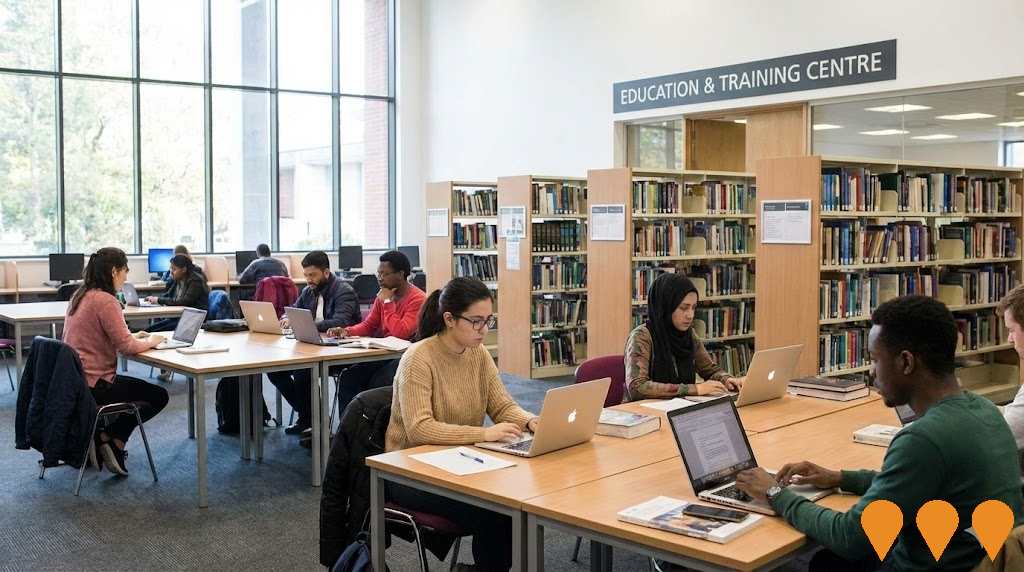
Ettalong Channel Dredging Project
Maintenance dredging of Ettalong Channel to restore safe navigation in Brisbane Water, including for the Palm Beach to Ettalong & Wagstaffe ferry. The 2025 campaign removed approximately 30,000 cubic metres of sand across multiple locations and regular ferry operations resumed on 14 June 2025.

Umina Beach Multi-Dwelling Housing Projects
Ongoing multiple residential development applications including dual occupancy, townhouse developments, and multi-dwelling housing projects throughout Umina Beach and Peninsula area. Various private developers seeking to increase housing density in residential zones with recent applications for 7 townhouses at 6 Berith Street, 4 units at 140 Trafalgar Avenue, dual occupancy at 33 The Rampart, and others.

Communications Facility at 109 McEvoy Avenue
Construction of a communications facility including a new Indara monopole, four 4G panel antennas, eight 5G active antenna units, a four-bay outdoor equipment cabinet, and ancillary equipment within a fenced compound to improve mobile network coverage in Umina Beach.
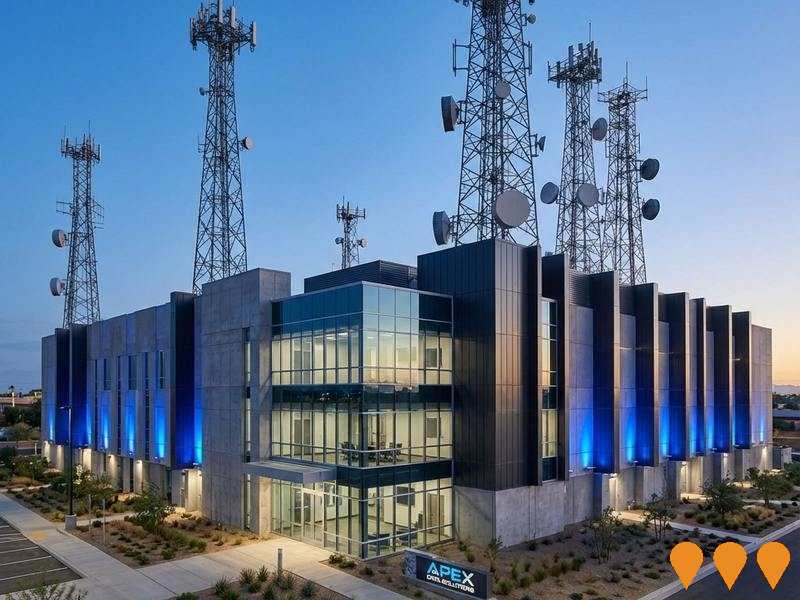
Beach Street Upgrade, Ettalong
Major upgrade of Beach Street including minor widening of the roadway, new road pavement, and provision of a Disability Discrimination Act compliant accessible bus stop to enhance safety and accessibility.

Employment
Employment performance in Umina - Booker Bay - Patonga has been below expectations when compared to most other areas nationally
Umina - Booker Bay - Patonga has a skilled workforce with essential services sectors well represented. The unemployment rate was 4.5% in the past year, with an estimated employment growth of 2.0%.
As of June 2025, there are 11,114 residents in work, and the unemployment rate is 0.3% higher than Greater Sydney's rate of 4.2%. Workforce participation lags at 50.2%, compared to Greater Sydney's 60.0%. Key industries of employment among residents include health care & social assistance, construction, and retail trade. Construction shows notable concentration with employment levels at 1.4 times the regional average.
However, professional & technical services show lower representation at 8.1% versus the regional average of 11.5%. The area offers limited local employment opportunities, as indicated by the count of Census working population vs resident population. In the 12-month period ending June 2025, employment increased by 2.0%, labour force by 2.7%, resulting in an unemployment rise of 0.6 percentage points. This compares to Greater Sydney's employment growth of 2.6%, labour force expansion of 2.9%, and unemployment rise of 0.3 percentage points. Jobs and Skills Australia's national employment forecasts from May 2025 suggest potential future demand within Umina - Booker Bay - Patonga. These projections estimate national employment growth of 6.6% over five years and 13.7% over ten years, with varying rates between industry sectors. Applying these projections to Umina - Booker Bay - Patonga's employment mix suggests local growth of approximately 6.8%% over five years and 14.0% over ten years.
Frequently Asked Questions - Employment
Income
Income levels sit below national averages according to AreaSearch assessment
Umina-Booker Bay-Patonga has a higher than average national income level according to AreaSearch data from the ATO for financial year 2022. The median income among taxpayers is $47,124 and the average income stands at $70,985, compared to Greater Sydney's figures of $56,994 and $80,856 respectively. By September 2025, estimates project approximately $53,066 (median) and $79,936 (average), based on a 12.61% increase from financial year 2022. The 2021 Census data shows household, family, and personal incomes in Umina-Booker Bay-Patonga falling between the 22nd and 24th percentiles nationally. The largest segment comprises 27.7% earning $1,500-$2,999 weekly (6,929 residents), similar to regional levels where 30.9% occupy this bracket. Housing affordability pressures are severe, with only 80.0% of income remaining, ranking at the 19th percentile. The area's SEIFA income ranking places it in the 4th decile.
Frequently Asked Questions - Income
Housing
Umina - Booker Bay - Patonga displays a diverse mix of dwelling types, with above-average rates of outright home ownership
Dwelling structure in Umina - Booker Bay - Patonga, as per the latest Census, consisted of 70.0% houses and 30.0% other dwellings (semi-detached, apartments, 'other' dwellings), compared to Sydney metro's 74.2% houses and 25.9% other dwellings. Home ownership in Umina - Booker Bay - Patonga was at 38.9%, with mortgaged dwellings at 26.7% and rented dwellings at 34.4%. The median monthly mortgage repayment was $2,080, below Sydney metro's average of $2,150. The median weekly rent figure was $400, matching Sydney metro's average. Nationally, Umina - Booker Bay - Patonga's mortgage repayments were higher at $2,080 compared to the Australian average of $1,863, while rents were also higher at $400 compared to the national figure of $375.
Frequently Asked Questions - Housing
Household Composition
Umina - Booker Bay - Patonga features high concentrations of lone person households, with a lower-than-average median household size
Family households account for 64.0% of all households, including 21.8% couples with children, 27.5% couples without children, and 13.5% single parent families. Non-family households make up the remaining 36.0%, with lone person households at 32.6% and group households comprising 3.5%. The median household size is 2.2 people, which is smaller than the Greater Sydney average of 2.5.
Frequently Asked Questions - Households
Local Schools & Education
Educational outcomes in Umina - Booker Bay - Patonga fall within the lower quartile nationally, indicating opportunities for improvement in qualification attainment
The area's university qualification rate in 20.6% is significantly lower than Greater Sydney's average of 38.0%. Bachelor degrees are the most common at 14.4%, followed by postgraduate qualifications (4.2%) and graduate diplomas (2.0%). Vocational credentials are prevalent, with 40.0% of residents aged 15+ holding them - advanced diplomas at 11.3% and certificates at 28.7%. Educational participation is high, with 26.0% currently enrolled in formal education: 9.4% in primary, 6.8% in secondary, and 3.2% in tertiary education.
The area's three schools have a combined enrollment of 1,894 students, serving distinct age groups with balanced educational opportunities (ICSEA: 986). However, local school capacity is limited at 7.6 places per 100 residents compared to the regional average of 15.9, leading many families to travel for schooling.
Frequently Asked Questions - Education
Schools Detail
Nearby Services & Amenities
Transport
Transport servicing is moderate compared to other areas nationally based on assessment of service frequency, route connectivity and accessibility
Transport analysis indicates 220 active transport stops operating within Umina - Booker Bay - Patonga area, consisting of a mix of ferry and bus services. These stops are served by 55 individual routes, collectively offering 1,917 weekly passenger trips. Transport accessibility is rated as excellent, with residents typically located 147 meters from the nearest transport stop.
Service frequency averages 273 trips per day across all routes, equating to approximately 8 weekly trips per individual stop.
Frequently Asked Questions - Transport
Transport Stops Detail
Health
Health performance in Umina - Booker Bay - Patonga is well below average with prevalence of common health conditions notable across both younger and older age cohorts
Health data indicates significant health issues in Umina - Booker Bay - Patonga.
Both younger and older age groups have notable prevalence of common health conditions. Approximately 55% (~13,759 people) of the total population has private health cover, which is quite high. The most prevalent medical conditions are arthritis (affecting 10.7% of residents) and mental health issues (impacting 9.3%). However, 61.2% of residents declare themselves completely clear of medical ailments, compared to 64.8% in Greater Sydney. The area has a higher proportion of seniors aged 65 and over at 28.7% (7,179 people), compared to the 24.5% in Greater Sydney. Despite this, health outcomes among seniors perform better than those of the general population.
Frequently Asked Questions - Health
Cultural Diversity
Umina - Booker Bay - Patonga ranks below the Australian average when compared to other local markets across a number of language and cultural background related metrics
Umina-Booker Bay-Patonga had a cultural diversity score below average, with 81.8% of its population born in Australia, 88.8% being citizens, and 92.9% speaking English only at home. Christianity was the predominant religion, comprising 53.3%, slightly lower than Greater Sydney's 53.4%. The top three ancestry groups were English (31.8%), Australian (27.9%), and Irish (9.6%).
Notably, Russian (0.5% vs regional 0.4%), New Zealand (0.9% vs 0.7%), and Maltese (0.6% vs 0.7%) groups were overrepresented compared to regional averages.
Frequently Asked Questions - Diversity
Age
Umina - Booker Bay - Patonga hosts an older demographic, ranking in the top quartile nationwide
Umina - Booker Bay - Patonga's median age is 47 years, which is higher than Greater Sydney's average of 37 years and exceeds the national average of 38 years. The 75-84 age group constitutes 11.2% of its population, compared to Greater Sydney's percentage and significantly higher than the national figure of 6%. Conversely, the 25-34 age group represents only 8.5%. Post-2021 Census data shows that the 75-84 age group grew from 9.3% to 11.2%, while the 55-64 cohort decreased from 13.8% to 13.2%. By 2041, demographic modeling projects significant changes in Umina - Booker Bay - Patonga's age profile. The 75-84 cohort is expected to grow by 42%, adding 1,164 residents to reach a total of 3,964. Residents aged 65 and above will drive 78% of population growth. Meanwhile, populations in the 0-4 and 35-44 age groups are projected to decline.
